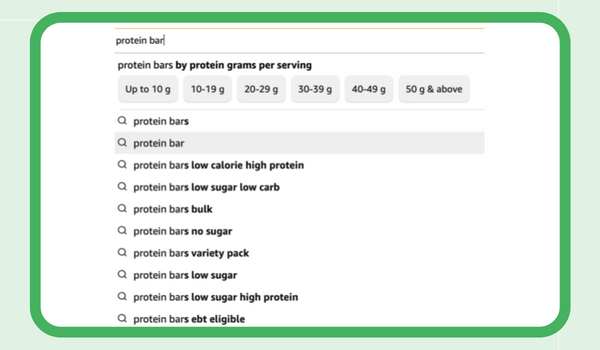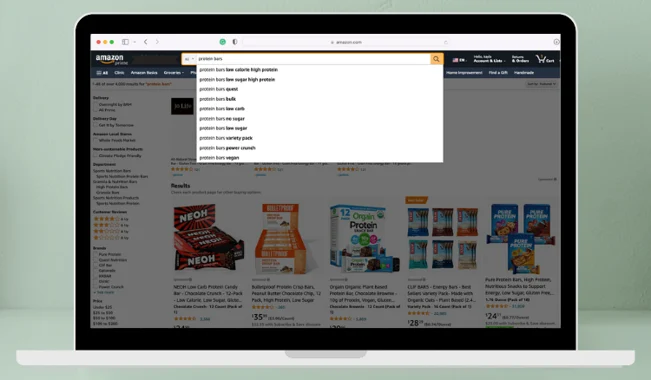The popularity of online grocery shopping has surged over the past few years. However, brands and retailers are struggling to keep up with the search preferences of conscious consumers who have highly specific preferences in mind. According to research by Label Insight, 84% of CPG brands fail to claim one or more of the three most searched for attributes for which their product qualifies. EatQ has found similar results within the niche of CPG food brands focused on health and sustainability. This is where optimizing e-commerce product searchability comes into play. In this blog post, we will explore four cost-effective tips for CPG brands to improve their e-commerce product searchability.
The Overview
- Understand Your Consumers
- Know Your Category
- Utilize Back-End Attributes
- Keep Your Data Current
Tip 1: Understand Your Consumers
The first step towards optimal e-commerce product searchability is understanding your consumer base. You need to know how conscious consumers search for products aligned with their preferences when shopping for groceries online. Consumers search using specific keywords and phrases to discover products tailored to their preferences. For instance, a conscious consumer might search for a “high protein plant-based bar with no added sugar” instead of just typing “protein bar” into the search bar. The predictive ‘suggestions’ in a search bar are a good indicator of popular searches.By knowing what your target consumer is searching for, you can update your product information and claim all qualified product attributes to maximize your product searchability.

Results for a predictive search on Amazon
Tip 2: Know Your Category
To stand out in a competitive e-commerce landscape, CPG food brands need to understand the competitive landscape, keep up with consumer preferences, and differentiate themselves from competitors. Your founder story and mission may help you convince a buyer, but they do not improve e-commerce discovery. For a high discovery potential, make sure you get a complete picture of what’s on shelf already and can substantiate your differentiating factors with research. If you’re differentiating on ingredients, nutrition, processing, or diet make sure to claim all relevant, qualified product attributes. This can ensure that consumers will find your product, especially when other brands fail to claim their qualified attributes. Finding efficient ways to stay up-to-date on trends within your category can enhance your competitive edge and improve your sales.
Tip 3: Utilize Back-end Attributes
Make sure you’re claiming all qualified back-end attributes possible to maximize your product’s potential to match a consumer’s shopping behavior. Back-end attributes are the various product attributes retailers and distributors offer brands on product submission forms. A retailer will use this data to populate their platform’s available filter options. This attribution strategy is one of the many benefits to selling online; your product reach isn’t limited to the space on your physical package. Say your brand offers a “high protein plant-based bar with no added sugar” that doesn’t contain gluten or artificial colors. You would indicate these five individual attributes– high protein, plant-based, no added sugar, gluten-free, and free from artificial colors– in the back-end of your grocery retail platform. That way conscious consumers can find your product when selecting any combination of those filters as they shop. By properly utilizing back-end attributes, you can increase the visibility and sales of your products without increasing your marketing budget.

Plant-based e-Commerce Product Search
Our next blog post goes deeper into the differences between search and filtering, read it next.
Tip 4: Keep Your Data Current
Evolving consumer trends and updates to search and filtering features by online retailers means your e-commerce product data can quickly become outdated. It’s best practice to update your listings with any new qualified attributes every few months to stay on top of emerging trends within your target consumer group and category. Choosing an affordable service partner that provides compliant, science-backed, optimized data can simplify the process of getting off the digital shelf and into consumer’s virtual shopping carts.
The TLDR:
To succeed in the virtual grocery landscape, CPG brands need to prioritize product data and attribution. Understanding customer needs and capturing all qualified attributes are essential in ensuring your products have a high potential for discovery. Partnering with a platform offering optimized data for category comparison and product attribution can simplify this process and save your brand time, energy, and money.
Claim your spot in the EatQ B2B Spring Pilot. As a pilot brand you will get free, unlimited access to the platform for an entire year!
About EatQ:
EatQ is a leading product data platform that specializes in helping small, health, and sustainability-focused brands differentiate themselves in a crowded market. The EatQ platform provides affordable pre-sales planning, marketing, and research tools including Competitor Comparison and Claim Finder features.



